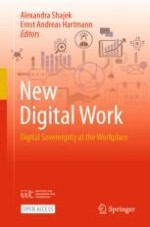1 The Tides Are Turning – From Offshoring to Reshoring
1.1 The Move to Globalisation and Integrated Supply Chains
1.2 Australia’s Role
1.3 The World is Changing Again
1.4 A Rethink Towards Reshoring
1.5 Effects on Australian Manufacturing
1.6 Technology Enablers
2 Digital Technologies to the Rescue – Are They a Game Changer for Reshoring
2.1 The Emergence of Digital Capabilities
2.2 Does I4.0 Help with Reshoring Ambitions?
3 The Australian Case – Building a Digital Foundation to Bring Back Manufacturing
3.1 The Unique Manufacturing Landscape in Australia
-
“little attention has been paid to the social and economic implications of Industry 4.0 for Australian workplaces, workers and society – specifically in the context of manufacturing”,
-
“insufficient attention has been paid to the importance of building Industry 4.0 technological and organisational capability and capacity amongst manufacturing SMEs and preparing larger firms for digital transformation”,
-
“Australia lags behind many of its competitor nations in the adoption and diffusion of advanced technologies and skills”, and
-
“given Australia’s relatively low economic complexity, there is a risk that a lack of collaboratively determined policy for Industry 4.0-driven industrial transformation leaves Australia insufficiently prepared to take full advantage of the opportunities flowing from Industry 4.0.”
3.2 New Skills Are Needed
3.3 A New Degree
-
boosting the capability of local value chains and strengthening university-industry collaboration in teaching and research,
-
embedding industry partnerships with participating universities, deepening links with local businesses, encouraging the culture of collaboration between higher education and industry, and.
-
delivering additional higher-level technical skills that directly articulate into a Bachelor’s degree on completion if desired.
